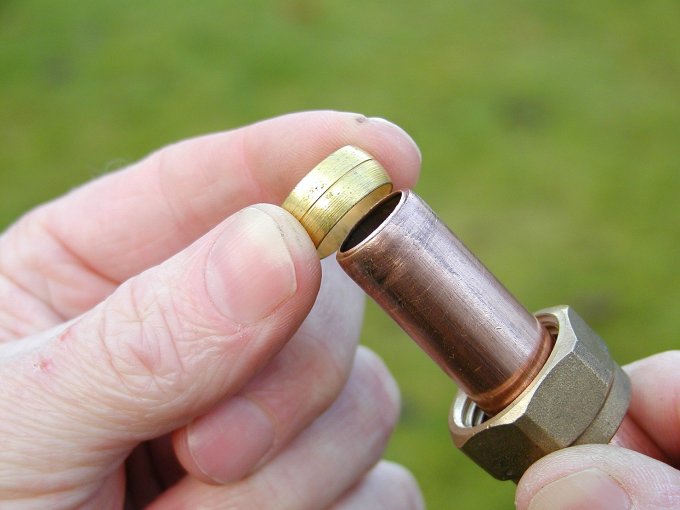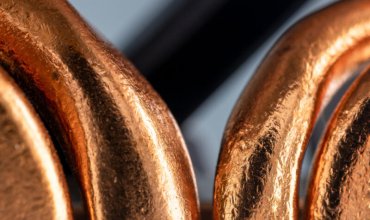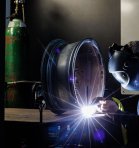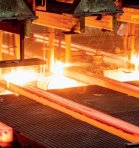The universe of metals is undoubtedly fascinating and diverse. Among them, copper zinc or silver occupy a special place, not only because of their history, but also because of their extensive use in various industries. The choice between these metals, although it may seem simple at first glance, actually poses some challenges. In this article, we'll take an in-depth look at copper zinc or silver to help you understand which will best suit your needs.
Following the principles of E-E-A-T (Expertise, Authoritativeness, and Trustworthiness), we will provide you with detailed information to make an informed choice. We'll look at the physical and chemical properties of these metals, their uses, benefits, and challenges of using them. Of course, each of these metals has its own unique characteristics that make it special. We will examine copper, zinc and silver from both a technical and practical perspective to learn how they perform in different situations.
Physical and chemical properties: why is copper zinc or silver so unique?
Copper: versatile and durable
Copper is a metal with a peculiar reddish-brown color, which is widely used in electrical engineering and electronics thanks to its exceptional electrical conductivity. Since ancient times, this metal has been popular due to its accessibility and mechanical properties.
Copper is soft and easy to form and work with, making it ideal for electrical wiring, plumbing pipes, and architectural components. It is also corrosion resistant, which increases its durability in a variety of environmental conditions.
In chemistry, copper occurs mainly in the form of Cu⁺ and Cu²⁺ ions, making its compounds extremely diverse and useful in various scientific and industrial fields. Copper is also an essential trace element for many organisms, including humans, highlighting its importance in biology.
Zinc: practical and protective
Zinc is a metal that is silvery blue in color and is relatively brittle at room temperature, but becomes malleable when heated. Zinc is commonly used for electroplating, which is the coating of other metals, mainly steel, with a thin layer of zinc to protect it from corrosion.
One of the key uses of zinc is in the production of alloys, such as brass (an alloy of zinc with copper), which increases their durability and resistance. In chemistry, zinc is most commonly found in the form of Zn²⁺ ions. Zinc is also an essential micronutrient for living organisms, playing a key role in many enzymatic biochemical reactions.
Silver: shiny and valuable
Silver is a precious metal with a distinctive shiny white appearance that has been prized for its aesthetic and economic value for centuries. Silver's physical properties, such as the highest electrical and thermal conductivity of all metals, make it indispensable in the electronics industry.
Silver is also resistant to oxidation and corrosion, although it can form a dark tarnish of silver sulfides when in contact with sulfur. In chemistry, silver occurs mainly in the form of Ag⁺ ions. It is a unique metal that also has bactericidal properties, which is used in medicine and in the manufacture of surgical instruments.
Applications of copper, zinc and silver: from industry to everyday life
Copper in electronics and construction
Copper, thanks to its outstanding electrical conductivity, is the main material used in electrical wires and electronic components. It is difficult to imagine modern electronics without the use of copper. The metal is typically used in microprocessors, integrated circuits and all kinds of connections.
In addition, copper plays an important role in the construction industry as a material for water pipes and radiators. Thanks to its resistance to corrosion, copper is an ideal material for plumbing systems, ensuring the long-term reliability of sanitary and hygienic systems. In historic buildings and contemporary architecture, copper-clad roofs are synonymous with durability and aesthetics.
Zinc in industry and environmental protection
Zinc plays a key role in electroplating processes, where it is used to coat steel, alumina and copper with so-called hot-dip galvanizing. This provides long-lasting protection against corrosion, which is of great importance in the construction, automotive, or energy industries.
Besides, zinc is commonly used in the production of alloys, including brass (an alloy of zinc with copper) and bronze (an alloy of zinc with copper and other metals). In the pharmaceutical industry, zinc is used in the production of ointments and creams that have a healing effect on the skin, due to its antibacterial and anti-inflammatory properties.
Silver in jewelry and electronics
Silver has been used for centuries as a valuable bullion in jewelry making. Jewelry, coins and various decorative objects made of silver are not only beautiful, but also durable. Silver's antibacterial properties have also found use in medicine, especially in the manufacture of surgical instruments and antiseptic dressings.
Thanks to its exceptional electrical and thermal conductivity, silver is widely used in high-tech industries such as electronics. Electrical connectors, contacts, heat conductors in cell phones, computers and other electronic devices are often made of silver or its alloys.
Economic and environmental aspects of choice: which is more cost-effective?
Economic benefits and costs of different metals
When choosing between copper zinc or silver, it is worth considering the economic costs and benefits. Copper is a relatively inexpensive metal compared to silver, making it more accessible for a wide range of industrial applications. However, its global price is volatile and depends on a number of factors, including demand in the construction and electronics sectors.
Zinc, on the other hand, is also quite affordable, although covering the costs associated with its mining, purification and alloy production can be higher compared to copper.
Silver is by far the most expensive of the three metals, mainly due to its status as a precious metal and its extensive applications in jewelry and electronics. Silver prices are decorated by the commodity market and can exhibit considerable volatility. However, investments in silver are often considered as a hedge against inflation and market volatility.

Ecological aspects of metal mining and processing
The ecological aspects of mining and processing copper zinc or silver is a key element to consider when choosing a metal. The mining of these metals comes at a high cost to the environment.
In the case of copper, mining is an extremely resource-intensive process and involves land degradation, water consumption and greenhouse gas emissions. However, the copper smelting and processing industry is taking steps toward more sustainable practices, promoting recycling and the use of emission-reducing technologies.
For zinc, sustainable measures include reducing zinc waste and optimizing electroplating processes. Zinc is also one of the metals that can be largely recovered and reused, reducing environmental impact.
Silver, due to its costly and resource-intensive extraction process, also raises significant environmental issues. High energy consumption and greenhouse gas emissions are just some of the challenges associated with silver production. Since silver is a precious metal, recycling it is more cost-effective and often practiced.
Health benefits and risks: how do copper, zinc and silver affect our health?
Copper: essential, but is it always safe?
Copper is an essential micronutrient that plays a key role in many biological functions. It participates in red blood cell production, tissue formation and nervous system function. In adequate amounts, copper is therefore essential for the body to function properly.
However, excess copper can lead to poisoning, called copperl, which manifests as abdominal pain, nausea and liver problems. Drinking water flowing through copper pipes can also contain trace amounts of copper, which can lead to negative health effects as a result of long-term consumption. It is therefore important to monitor copper levels in the body and avoid excess.
Zinc: the key to immunity
Zinc is also an essential element that supports immune function, wound healing and DNA and protein synthesis. Zinc deficiency can lead to weakened immunity, which increases the risk of infections, especially in children and seniors.
However, excess zinc, while less common, can lead to toxicity, symptoms of which include a metallic taste in the mouth, nausea, vomiting and headaches. Consumption of zinc in excessive amounts, usually through the use of dietary supplements, can also interfere with the absorption of other important elements, such as copper and iron.
Silver: bactericidal, but requires caution
Silver is not an essential element for the body, but its antibacterial properties are widely known and valued. Colloidal silver, used in medicine as an antiseptic, can help treat infections and heal wounds.
Unfortunately, excessive consumption of silver, such as in the form of dietary supplements, can lead to a condition called argyria, characterized by a permanent discoloration of the skin to a bluish-gray color. Although argyria is not dangerous to health, its symptoms are irreversible, challenging the patient's aesthetics.
Summary
The choice between copper zinc or silver depends on a number of factors, including physical properties, applications, health benefits and environmental aspects. Copper is versatile and irreplaceable in electronics and construction, zinc protects against corrosion and is important in alloy production, and silver stands out for its antibacterial properties and high conductivity.
It is also worth considering cost and environmental impact when deciding on a metal. Regardless of the choice, however, it is important to adhere to the principles of sustainable use of these valuable resources, taking care of both the economy and our health and protection of the planet. Thank you for taking the time to read our article and we hope the information provided has helped you make an informed choice.

















